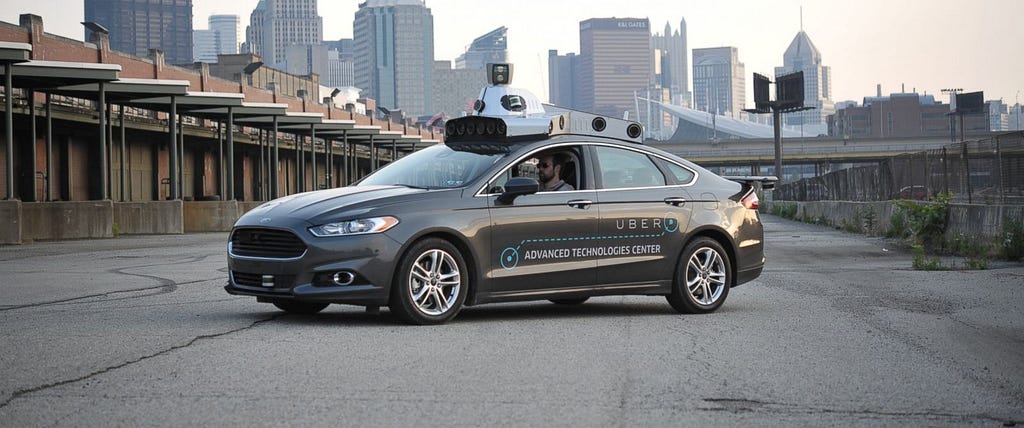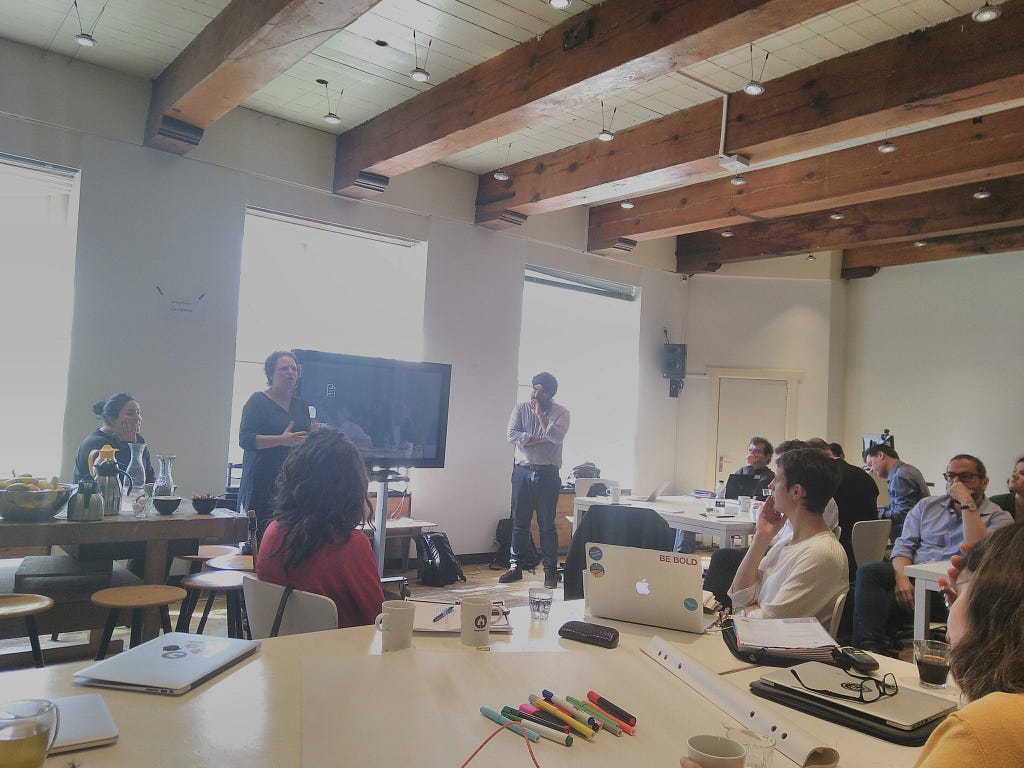Exploring governance experiments

In a complex world, with technologies and ideas spreading more quickly than ever before, our traditional ways of balancing the needs of society and industry may not work so well, and so we need to be experimenting with alternatives.
So last week, Doteveryone and Dark Matter Laboratories brought together a small diverse group to explore the idea of regulatory experiments, and what a network of organisations working on, and learning from these, might look like and do.
Moving from “regulation” to “governance”
We realised during the day that we were actually interested in governance experiments. Regulation is a specific form of governance. It makes people think of regulators and therefore take a more limited view of the possibilities. Opening it up and thinking instead of governance means we can think about very different ideas, such as ennobling governance — inviting people to behave better by themselves.
Indy Johar’s example was of slower, safer driving when children are seen playing by the road. You still need laws for the minority, but many people will drive better in this situation, and it’s a holistically better solution than adding speed bumps.
For me, this idea echoed Onora O’Neill’s wish for us to do more to encourage honesty and good behaviour, rather than putting in place yet more systems and tools for accountability and transparency, which can sometimes mitigate against the desired practices. Bureaucracy and management culture damage trust in both directions, between the managed and managers, as well as the public. The work to demonstrate accountability takes the place of the actual intended activity, be it teaching or healthcare.

How can systems be governed to align with society’s culture and ethics?
This was the question that much of our conversations centred around. How can governance help to create or sustain public value and prevent harms? There are many different ways to govern something. We can think about market shaping, pricing, norms and culture, provenance checks, planning requirements, technical biases and instruments, polycentric governance, dynamic incentives, real time warnings and feedback systems, the rule of law (driving compliance, but also allowing judgement given the context). But good governance considers a whole system, and is not a single intervention. It is a framework which accrues over time and that hopefully delivers the outcomes you want in a complex world. Changing this demands a systems mindset.
“Good governance considers a whole system, and is not a single intervention.”
We also talked about the need for loose coupling between compliance and regulations. Adaptive, principles-based regulation enables enforcement based on breaches of the spirit of a regulation rather than the letter of it. This is helpful in a rapidly changing and complex world where it is very hard to detail all possible specifics such that they cannot be designed around.
But for such “grey policies”, that are ambiguous enough to allow interpretation, what is the right level of ambiguity, and does this change over time?
Human judgement is necessary. There also needs to be trust in how the regulation is interpreted and by whom. How can the 99% of people not involved in the design or implementation of a governance system trust the process? This means we also need to take into consideration the legitimacy of what is being governed, and how it’s governed.
Moving from experiments to the real world
Experimentation is worthwhile. But the world is full of labs, sandboxes and incubators. The challenge is the integration of experiments with the wider context and embedding change.
Matthew Claudel from designX gave us three reasons to be cautious about governance experiments:
- spectre of apathy — if you build a sandbox, people might not come to use it
- crisis of seduction — when technology is hedonistic, addictive and rewarding, as many everyday internet services are today, it’s very hard to create good governance, even when democracy is threatened
- race to the bottom — when a testbed for new ideas ends up optimising for the wrong thing (e.g. Pittsburgh’s speedy implementation of a permissive structure for autonomous vehicle testing, which was bad for the city)
Recipes for Systemic Change by the Helsinki Design Lab was given as some recommended reading on embedding change. Their Studio Model is an experiment in using a range of tools from design to achieve breakthroughs, first in thinking and then in action. They emphasise that the “separation of thinking and doing destroys an important feedback loop which enables self-learning within a project or programme.”
So for us to experiment effectively, we will need to be philosopher-makers — thinking and doing in balance.
But a number of interesting questions emerged from the workshop and require further thinking, as well as doing of course. These included:
- What would software look like with a different cultural frame? What would code look like from an indigenous perspective? Would it perhaps be verb rather than object oriented?
- After the tech backlash and concerns about the big network platforms, what would a company which innovates and takes private capital, but also has social purpose and really good practical governance look like?
- It can be difficult for senior policy makers to talk publicly about what they don’t know. Can we create a space where they can talk safely?
Building a community of practice
Overall, this was a great workshop that bought together very different perspectives and showed that there is a lot of potential for future collaboration. Because collaboration can be a catalyst for positive change.
Elinor Ostrom’s work on the commons for example, was mentioned a lot and commons concepts ran throughout the workshop. Waag, introduced a vision of a “Chamber of Commons” (a mirror of the commercial version). There was also discussion of the potential of data commons, whether that be in the form of public open data, or other types of shared, collective information (possibly including personal data), with appropriate governance. Also raised was an interesting example from Amsterdam, where every document coming out of the city government includes a paragraph about how citizens were involved in the decision, as a basic requirement, a bit like a food nutrition label.
It is clear that we can achieve more together than we can alone and more careful and creative convening, in a trusted environment like this, will help the different organisations working in this area to learn from each other and build a community of practice. Thank you Indy and Cassie!
Many thanks to Waag for hosting us, and for the makerspace and biohackspace tour. I look forward to rejoining Waag and others at the Public Stack Summit later in June.
Exploring governance experiments was originally published in Doteveryone on Medium, where people are continuing the conversation by highlighting and responding to this story.